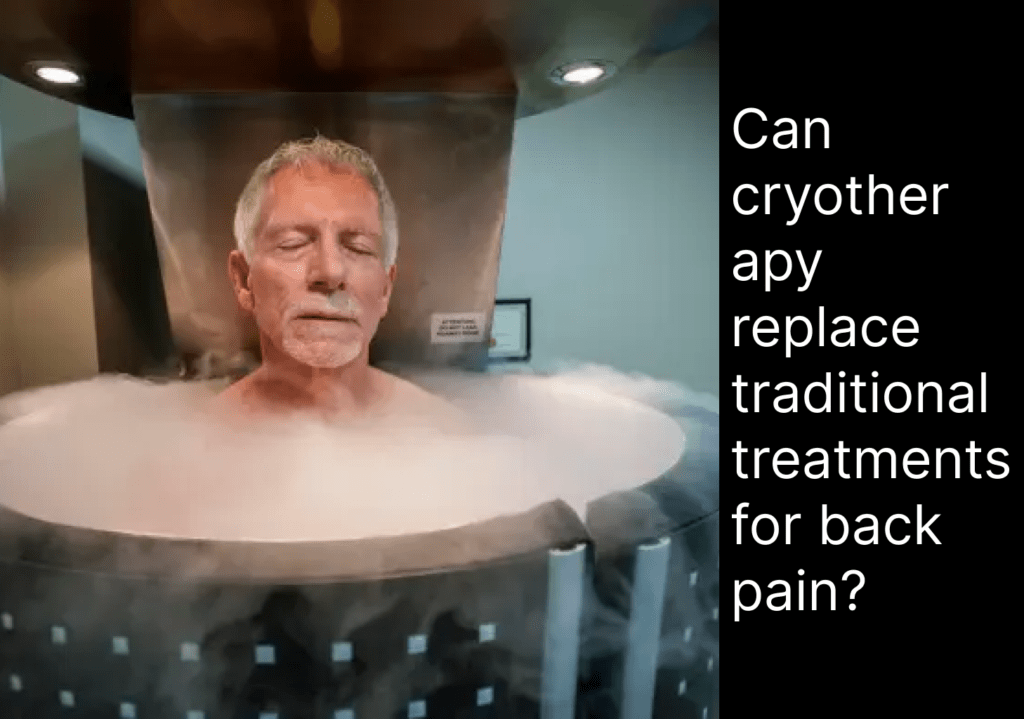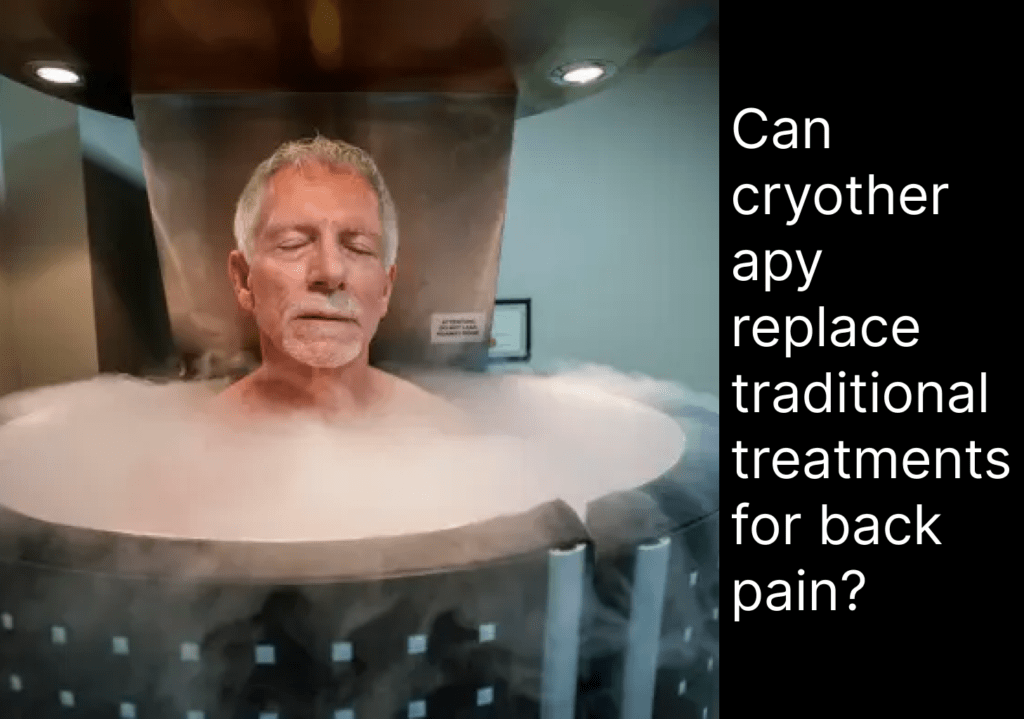Cryotherapy

Back pain is a prevalent issue affecting millions of people worldwide, impacting their daily lives and overall well-being. While traditional treatments like medications, physical therapy, and surgery are commonly prescribed, a growing interest in alternative therapies has emerged. One such alternative that is gaining attention is cryotherapy. In this article, we’ll delve into the most asked questions on Google regarding cryotherapy and its potential to replace traditional treatments for back pain.
What is Cryotherapy?
Cryotherapy involves exposing the body to extremely low temperatures for a short duration. This can be done through various methods, such as whole-body cryotherapy (WBC), local cryotherapy, or cryotherapy chambers. The idea behind cryotherapy is to reduce inflammation, alleviate pain, and promote overall healing.
How does cryotherapy work for back pain?
Cryotherapy works by constricting blood vessels and reducing blood flow to a specific area, resulting in decreased inflammation and pain. The sudden exposure to cold temperatures is believed to stimulate the release of endorphins, the body’s natural painkillers. Additionally, cryotherapy may enhance cellular repair and boost circulation, contributing to the healing process.
Can Cryotherapy Be an Effective Alternative to Medications?
While cryotherapy may offer relief for some individuals, it’s essential to note that it might not completely replace traditional medications prescribed for back pain. Medications like nonsteroidal anti-inflammatory drugs (NSAIDs) and muscle relaxants target pain and inflammation differently, and their efficacy varies from person to person. Cryotherapy can be used as a complementary treatment but should be discussed with a healthcare professional.
Is cryotherapy safer than surgery?
Cryotherapy is generally considered safe when performed by trained professionals. However, its effectiveness compared to surgery depends on the nature and severity of the back pain. While cryotherapy may provide relief for certain conditions, such as muscle strains or inflammation, it may not be a suitable substitute for surgical interventions required in cases like herniated discs or spinal stenosis.
Are there any risks associated with cryotherapy?
Like any medical treatment, cryotherapy comes with potential risks. Skin burns, frostbite, and allergic reactions to extreme cold temperatures are among the reported side effects. It’s crucial to follow safety guidelines, limit exposure time, and consult with a healthcare provider before opting for cryotherapy, especially for individuals with certain medical conditions.
Conclusion:
In conclusion, cryotherapy shows promise as a complementary treatment for back pain, offering potential benefits in reducing inflammation and alleviating discomfort. However, it is not a one-size-fits-all solution and may not replace traditional treatments entirely, especially for severe cases requiring surgical intervention. Before considering cryotherapy or any alternative therapy, individuals should consult with their healthcare providers to determine the most suitable and effective treatment plan tailored to their specific condition.
